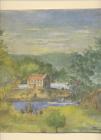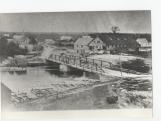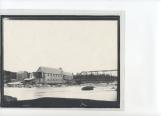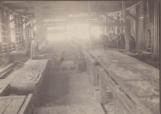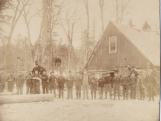1
From the moment of first settlement, the acquisition of lumber was a priority for the residents of Shelburne. Although some of the early Loyalists favoured immediate protection from the elements and built log cabins, most preferred to wait until lumber was available to erect more permanent framed dwellings. The typical 18th Century Georgian house was symmetrical in design with a chimney at each end. Fireplaces at the time were the principal source of heat and ceilings were as a rule low so that the heat could be more efficently used within the structure.Initially lumber was either imported or manufactured locally by sawpits. In the latter instance a pit was dug in the ground, a piece of timber placed across the opening, and with one man above and one man below, a pit saw was drawn through the timber to cut plank.
Although saw pits were used throughout the Loyalist period, as early as 1784 several potential saw mill sites on watercourses were surveyed and two mills had actually been placed in operation. By 1787 five sawmills had been established on the banks of Jordan, Roseway, and Sable Rivers.
In addition to supplying lumber to local markets, the Loyalists of Shelburne initiated Nova Scotia's squared timber trade when the vessel - "Prince William Henry" was loaded with a cargo of the same at Jordan River for shipment to London, England in 1785. The community was also an early participant in the West Indies trade with local mills turning out lumber, lathes, shingles and cooperage materials such as staves and heads for export to warmer climes.
When all of the timber standing in close proximity to the mills had been harvested, cutting operations moved further inland towards the interior of the colony. Throughout all of the 19th century and well into the 20th century temporary lumber camps were established to house loggers during the winter cutting season and the rivers were utilized after spring breakup to transport logs down to the mills.
3
Humphreys House1785
Shelburne, Nova Scotia, Canada
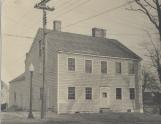 Credits:
Credits:Collection of The Shelburne County Museum
5
R.W. Freeman's Mill1896
Jordan Falls, Shelburne County, Nova Scotia,Canada
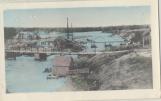 Credits:
Credits:Collection of The Shelburne County Museum
6
Jordan River Residents and Sawmill hands ca 19001900
Jordan River, Shelburne County , Nova Scotia, Canada
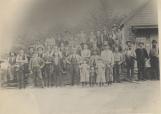 Credits:
Credits:Collection of The Shelburne County Museum
9
McGill's Shipyard and Sawmill1910
Commissary Island, Shelburne, Nova Scotia, Canada
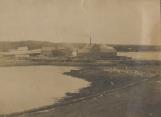 Credits:
Credits:Collection of The Shelburne County Museum
11
Roseway Sawmills1915
Roseway River, Lower Ohio, Shelburne, Nova Scotia, Canada
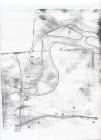 Credits:
Credits:Collection of The Shelburne County Museum
13
Morine's Falls, Shelburne, Nova Scotia circa. 19401940
Roseway River, Shelburne, Nova Scotia, Canada
 Credits:
Credits:Collection of The Shelburne County Museum
14
Log piles in Sable River awaiting transfer to the milling destination.1940
Sable River, Shelburne County, Nova Scotia,Canada
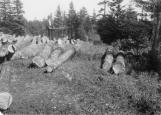 Credits:
Credits:Private Collection
